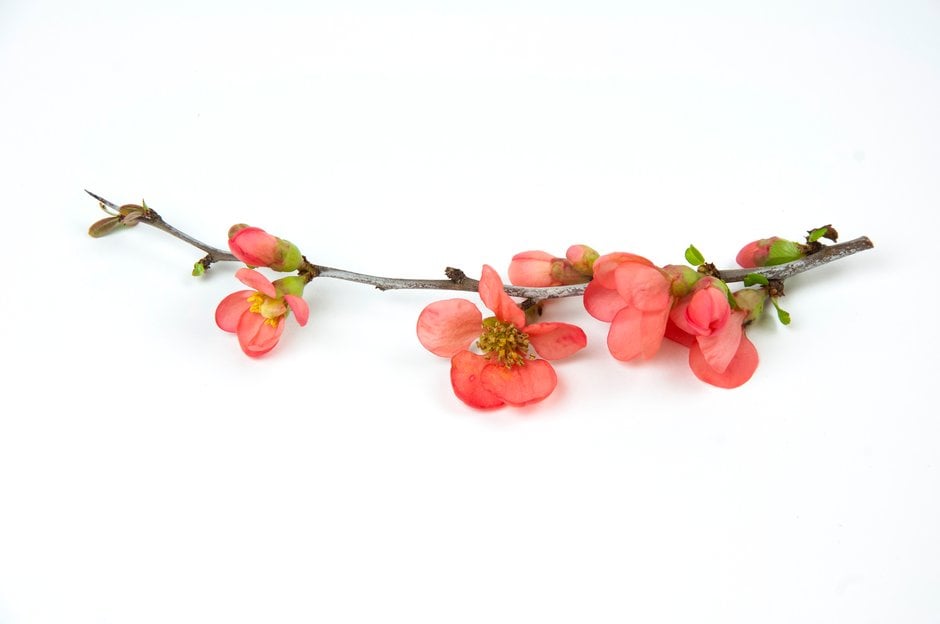Chaenomeles speciosa Mango Storm ('Mincha01'PBR)
Japanese quince [Mango Storm]
A compact, deciduous shrub about 1.5m tall and wide, with glossy dark green leaves, and an abundance of double salmon-orange flowers, in clusters, on bare stems in early spring and again in early summer with the leaves, followed by aromatic green-yellow fruits in autumn. These can be used to make jams and jellies but please see notes on toxicity for further advice

Buy this plant
Size
Ultimate height
1–1.5 metresTime to ultimate height
5–10 yearsUltimate spread
1–1.5 metresGrowing conditions
Moisture
Moist but well–drained, Well–drainedpH
Acid, Alkaline, NeutralColour & scent
| Stem | Flower | Foliage | Fruit | |
| Spring | Orange | Green | ||
|---|---|---|---|---|
| Summer | Orange | Green | ||
| Autumn | Green | Green Yellow | ||
| Winter |
Position
- Full sun
- Partial shade
Aspect
South–facing or North–facing or East–facing or West–facing
Exposure
Exposed or Sheltered Hardiness
H4Botanical details
- Family
- Rosaceae
- Native to GB / Ireland
- No
- Foliage
- Deciduous
- Habit
- Bushy, Spreading branched
- Potentially harmful
- Seeds contain toxins so these should be removed if you are considering eating the fruit, usually grown as an ornamental shrub. Pets: Fruit are ornamental - not to be eaten - see the HTA guide to potentially harmful plants for further information and useful contact numbers
- Genus
Chaenomeles are deciduous, usually spiny shrubs with simple leaves and cup-shaped, 5-petalled flowers, solitary or clustered, in spring, followed by edible often fragrant green or yellow fruits
- Name status
Trade
How to grow
Cultivation
Grow in well-drained soil in sun or partial shade. Grow in full sun for the best flowering and fruiting. See quince cultivation for further advice
Propagation
Root semi-ripe cuttings in summer. Layer in Autumn. Sow seed in an open frame or seedbed in Autumn.
Suggested planting locations and garden types
- Cottage and informal garden
- Wildlife gardens
- Wall side borders
- Climber and wall shrubs
- Flower borders and beds
- Hedging and screens
- Edible fruit
Pruning
If growing against a wall cut back flowered shoots to within 2/4 buds of the permanent framework. If growing as a shrub, prune after flowering to strong buds or basal growth.Take out one-fifth of old shoot to the base.
Pests
May be susceptible to scale insects, brown scale and aphids
Diseases
May be susceptible to fireblight, blossom wilt, brown rot and honey fungus (rarely)
Get involved
The Royal Horticultural Society is the UK’s leading gardening charity. We aim to enrich everyone’s life through plants, and make the UK a greener and more beautiful place.